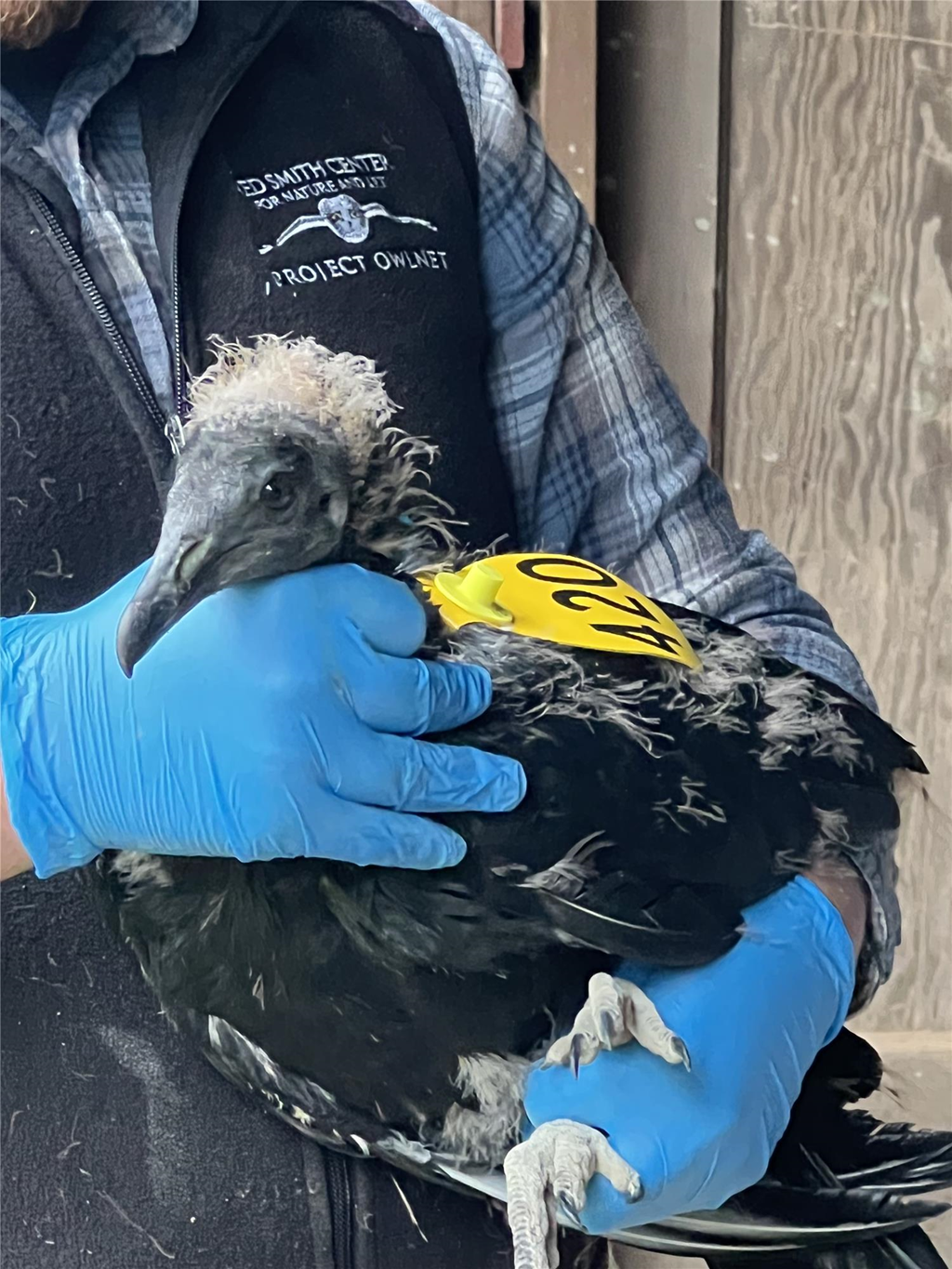Nesting Neighbors
Posted on in In the Field by Laura Berry, Science Communications Intern

Driving home from Hawk Mountain Sanctuary on October 4th was especially anxiety-inducing. The steady misting rain on the highway would have normally kept my foot hovering the brake, but on this day I uncharacteristically occupied the passing lane. I was expecting company – two Hawk Mountain biologists and a van full of trainees were 20 minutes behind me. About a month prior, I reached out to research biologists David Barber and Bracken Brown about a pair of black vulture chicks who resided in the old barn on my property. Black vultures are unique in their nesting behavior, not building much of a nest at all and laying eggs on the ground, often in empty human structures. This was not the first year my family noticed vulture chicks: we had been gracious neighbors to their parents for the past four breeding seasons. And that day we were hoping to tag the chicks, the last two of the season for the researchers.
Hawk Mountain has been studying black vultures since 2010, though turkey vulture research began in 2003. Led by David Barber, black vulture data is collected through the monitoring of active nests, tracking of migratory movements using satellite telemetry, and wing tagging. By placing wing tags on nestlings, researchers are able to study survival rates and population dispersal among young birds after they fledge. Wing tags are blue or yellow with a large number printed on either side, similar to a livestock tag. Observers can report tag color, number, and location of tagged birds through Hawk Mountain’s website or directly to David Barber.
Arriving home, my dad and I cleared a spot in our shed just in time for the white van with the hawk’s head logo to pull in the driveway. I was nervous—though it was not my first time joining the researchers on a vulture-tagging trip, I felt these were “my vultures.” The behavior of wild animals is never predictable, and since I couldn’t coach their good behavior, I just hoped for the best as we opened the red door and entered the barn.
Bracken and David carried large nets, ready to scoop up the chicks as they scuttled to their corner to hide, but unfortunately it would not be so easy. Looking up we could see two large black birds in the rafters—they had already begun to fledge! I felt a mixture of pride and failure, thinking the likelihood of getting them down was hopeless, but David and Bracken did not skip a beat. Up a ladder Bracken went, attempting to dislodge the young birds with his net. The first chick went quietly, a slow flap to the ground and scooped up by David’s ready arms. The second chick needed a little more encouragement, with my dad getting involved in the ladder-climbing. Once #2 was safely captured, they were brought to the shed for measurements and tags.

David and Bracken guided onlookers through each step of their process, narrating and answering questions as they went. Wing-chord measurements are taken with a metal ruler to age the nestling, and then the bird is placed inside a modified newspaper mailbox to be weighed. The mailbox is the perfect size to keep the vulture chick secured and calm. While inside, researchers slide the wing gently through a slit cut in the side of the mailbox and attach the tag.
The trainees were then given the opportunity to practice holding the chicks. Future scientists themselves, they are taught the proper handling methods, but practicing in the field on live, wild raptors offers important hands-on learning opportunities. Chicks are handled carefully, held firmly around the legs and base of the head to stabilize the biting-end and to restrain the bird. This keeps both animal and handler safe and does not hurt the bird.
I was given the chance to hold and release one of the chicks, #420, after being properly instructed by Bracken. Holding the young bird carefully, I felt its heartbeat against my own. Holding the next generation, knowing that in a few short weeks they would be soaring through the air, wild and knowing true freedom, was quite the humbling experience. After posing for a once-in-a-lifetime photo, I set the chick down with their sibling. The pair slowly made their way to their nest corner to recover, a bit shaken, but unharmed.
After release, it only took a few days for the chicks to be out on the roof of the barn, practicing real flight skills with a parent at their side. They hang around for about a month, coming back to the barn at night to sleep, and drive-up local celebrity status as reported sightings come pouring in. These two chicks will likely not return, as this nesting spot has already been claimed by their parents, but hopefully we will have a new brood next year and the process can begin again.